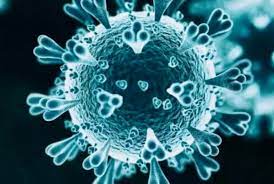A bigger killer disease ‘X’ yet to come, yet to have name
PRADEEP RANA
 NEW DELHI : Several news outlets in past few weeks have been abuzz with Disease X “which will be deadlier that Covid and will wipe out some 20 to 50 million” from the planet in its sweep.UK expert issues warning saying ’20 times deadlier than Covid . Its a global health challenge, animals may be carriers of virus.’
NEW DELHI : Several news outlets in past few weeks have been abuzz with Disease X “which will be deadlier that Covid and will wipe out some 20 to 50 million” from the planet in its sweep.UK expert issues warning saying ’20 times deadlier than Covid . Its a global health challenge, animals may be carriers of virus.’
This has generated quite confusion among the people, whether it is a disease which may have already started infecting people. Some, on the other hand come to believe that it is not a disease at all because Disease X is “no disease.”
Based on expert estimates, Disease X could potentially result in up to 50 million fatalities. “Let me put it this way: the 1918-19 flu pandemic killed at least 50 million people worldwide, twice as many as were killed in World War I.
Fact is Disease X not a disease in itself but “X” has been put after “Disease” by WHO because it is a future disease which we are yet to know, yet to come, and yet to have a name. Just as in maths, X stand for an unknown, till it is filled by a value.
Futuristic projections based on current trends do indicate humanity is heading for a disease which will be more deadly, more complex, more fatal than Covid but can not be named yet.
In its list of world’s 8 most dangerous diseases, World Health Organisation (WHO) has added a slot number 9 for a future, unknown, unnamed disease. But it will be the disease which would be more resistant to existing drugs and vaccines, more deadly than Covid19 and a bigger killer in sweep. We do not know when it is going to hit us, but reports say it will wipe 20 to 50 million population off this Earth. 
In 2018, WHO identified 8 types of “priority diseases” which have potential to become pandemic with large scale deaths. This was done for governments around the world to develop countermeasures and drugs to fight these diseases. These are:
1. Covid19 2. Crimean-Congo Hemorrhagic Fever 3. Ebola Virus Disease and Marburg Virus Disease 4. Lassa Fever 5. Middle East Respiratory Syndrome Coronavirus (MERS-CoV) and Severe Acute Respiratory Syndrome (SARS) 6. Nipah and Henipaviral Diseases, 7. Rift Valley fever 8. Zika and 9. Disease X
Covid and Nepah have already stuck in India recently. All from 1 to 8 have struck different parts of the world in varying degrees.
It surprises many that Covid-19 was identified as killer in 2018 while it came to be popularly known only after pandemic struck in late 2020. Dr Michael Ryan, Executive Director of WHO’s Health Emergencies Programme, says targeting priority pathogens and virus families for research and development of countermeasures is essential for a fast and effective epidemic and pandemic response.
“Without significant R&D investments prior to the Covid19 pandemic, it would not have been possible to have safe and effective vaccines developed in record time,” Dr Ryan says.
For those pathogens identified as priority, the WHO blueprint for epidemics develops R&D roadmaps, which lay out knowledge gaps and research priorities.
“This list of priority pathogens has become a reference point for the research community on where to focus energies to manage the next threat,” says Dr Soumya Swaminathan, WHO Chief Scientist.
No. 9 is named Disease X because it has yet to strike. So it is a placeholder for a future disease. Like a reserved slot but guest name is not known till he arrives. Once it strikes, it will named so-and-so in place of Disease -X.
“Disease X represents the knowledge that a serious international epidemic could be caused by a pathogen currently unknown to cause human disease. The R&D Blueprint explicitly seeks to enable early cross-cutting R&D preparedness that is also relevant for an unknown ‘Disease X’,” according to WHO definition.
While doing a name call, WHO cautions, “This is not an exhaustive list, nor does it indicate the most likely causes of the next epidemic. WHO reviews and updates this list as needs arise, and methodologies change. Based on the priority diseases, WHO then works to develop R&D roadmaps for each one.”
The global health body says the number of potential pathogens is very large across the world while the resources for disease research and development (R&D) is limited. To ensure efforts under WHO’s R&D blueprint are focused and productive, a list of diseases and pathogens are prioritized for R&D in public health emergency contexts.
Humanity may boast of breakthroughs in medicines, but a chilling fact is that among all the living beings, only humans need medicines to survive and continue on this Earth. All other birds, animals which we think “inferior” do not require any drugs to live and perpetuate.
Are we losing war against forever mutating viruses? Are other species only mutely watching and waiting us to go?
(Writer is a senior Journalist)

